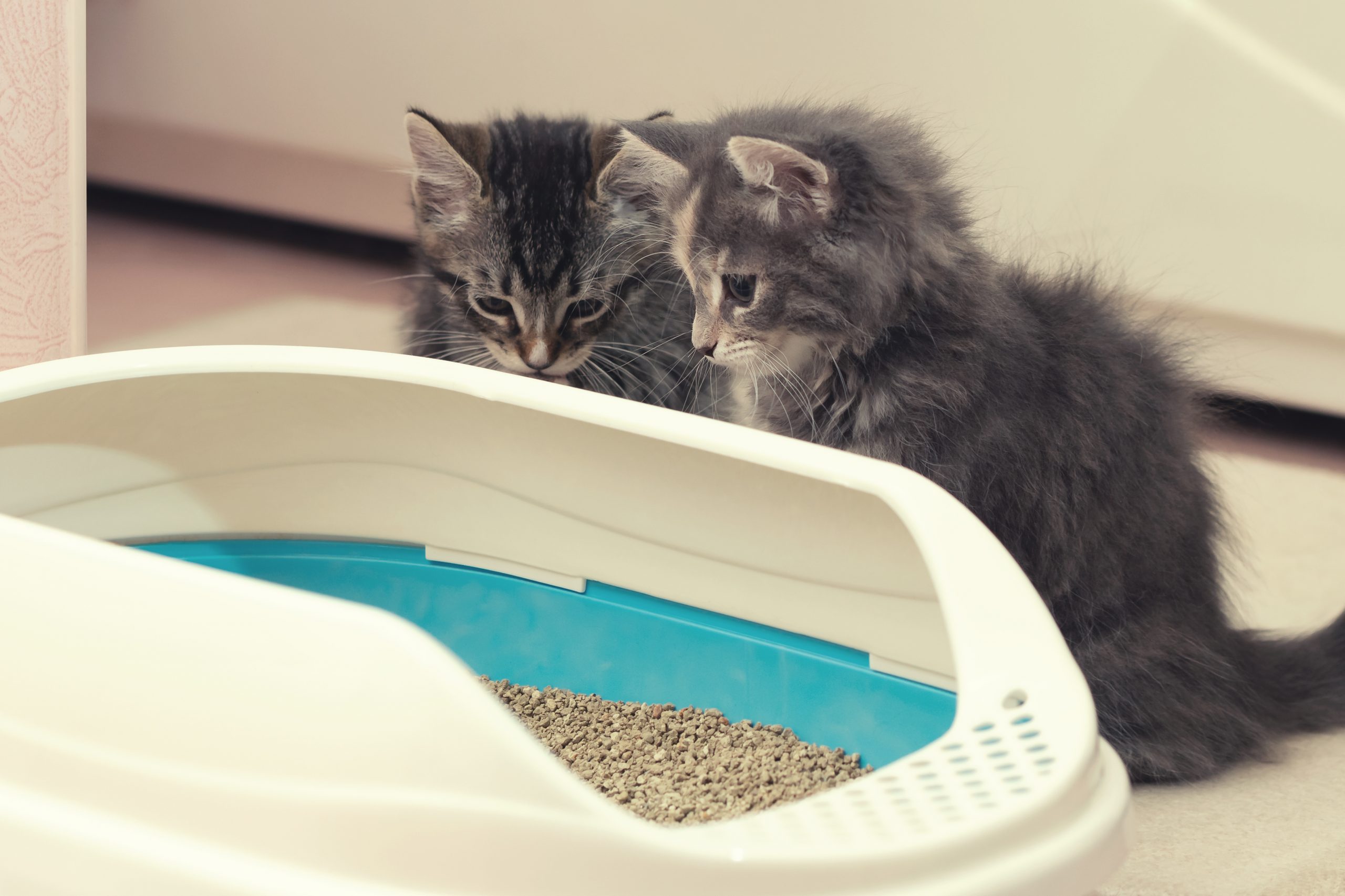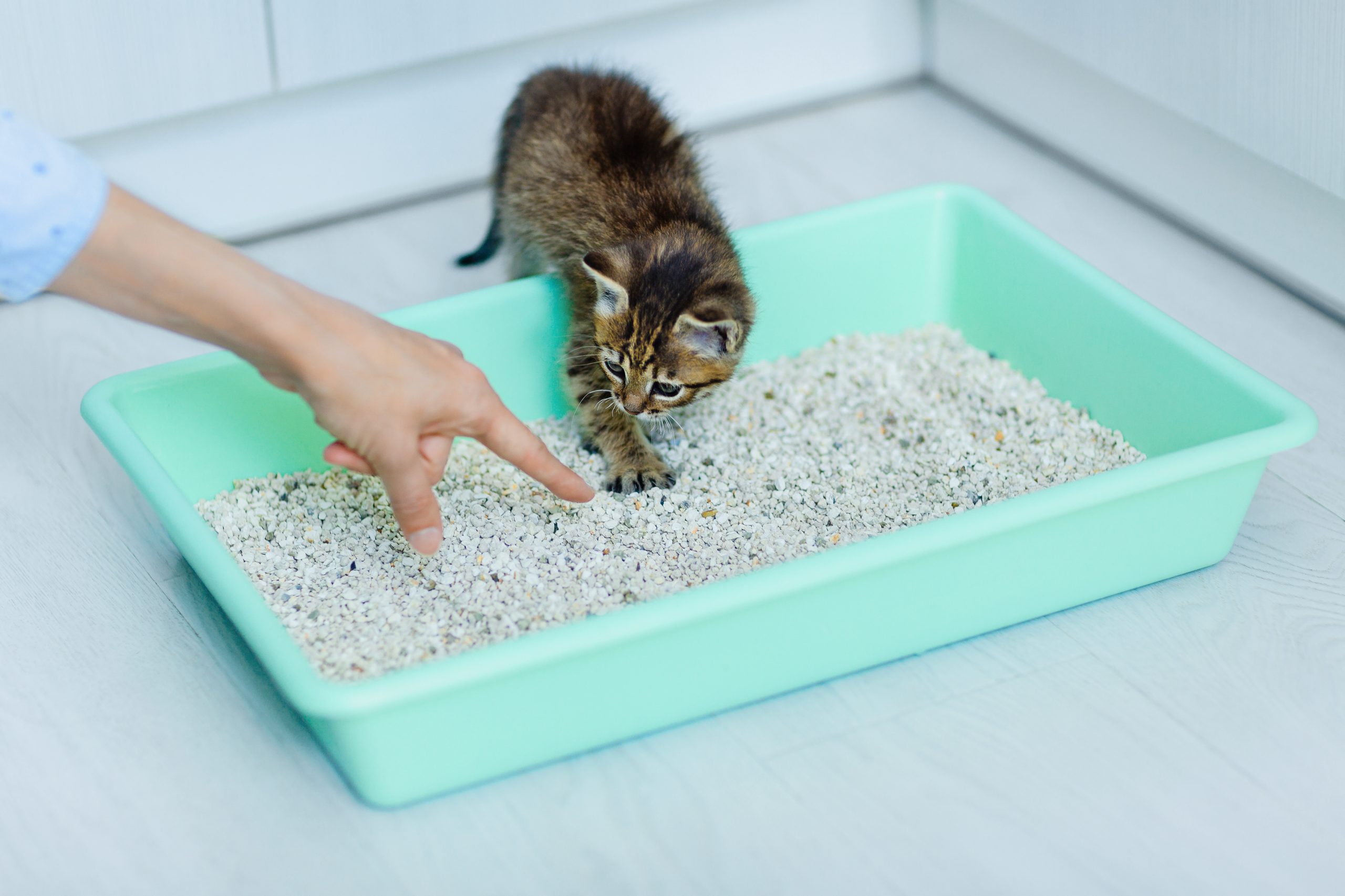Did you get a new furry member of the family? Or maybe your older cat doesn’t want to use the litter box? Here are 3 simple tips to litter box training that really work.
Kittens and cats find it natural to do their business in sand or soil as their mothers would have taught them to do so soon after they were born. But some cats are prematurely separated from their moms and therefore didn’t learn how to use a litterbox.
And, in other cases, your cat may have suffered from some stressful changes in their life and is now pooping or peeing outside of her box.
Here’s how to effectively litter train a kitten:

1. Pick the right litter box and litter
Start by ensuring you have the right amount of boxes
Did you know that you need at least one litter box per cat? And an extra one just in case – cats like to have options. If you have more than one cat, then you need to make sure you space these boxes far away from each other. Cats are often territorial over their litter boxes.
Next, the type of box you need
Your cat needs a box they can move around in. The sides of the box need to be high enough to allow for enough litter to cover up your cat’s business, but low enough for them to easily get in and out. Cats tend to kick up a lot of litter when covering up their business. Make sure you pick a box made out of non-absorbent material (stay away from cardboard).
There are some awesome litter boxes that come with tops (like little porter loos for your cat). These tend to mask any smells and look better in your home. However, when you first start, your cat might prefer a topless litter tray.
Where to place the box
You need to place the box in a quiet location, far away from your cat’s eating and sleeping areas. But make sure it is close enough for your cat not to have to mission to find it. A corner location is often best as then your cat will not feel as vulnerable or exposed.
Once you have found a good place for the box, then leave it there. Do not move it around as this will confuse your cat.
The litter
There is a wide range of litters you can choose from. Some of these include crystals (clumping and non-clumping), sand-like litter, and even scented litter. You may need to do some experimenting to find out which one your cat prefers. Just a head’s up – cats tend to prefer unscented litter.
When to clean the box
Do not merely put more litter in the box to cover up any poops. You need to scoop out solid waste at least once a day and change the litter once a week. Do not throw any litter down your drainpipes as this can cause plumbing issues.

2. Introduce your kitten to the litter box
Encourage your kitten to use the litterbox by placing them in the box at regular intervals – especially after they have eaten or when they wake up after a nap. Put them in the box and wait to see what happens. Most kittens start to dig in the sand when they are about 4 weeks old.
If your cat does not scratch in the box, then you can try gently taking a front paw and scratching in the litter with it. When you let go, they might continue doing this on their own.
Most cats like some privacy when they go to the loo, so try not to hover around them, rather give them some space and reward them with a treat afterwards.

3. Stay calm
If you find your cat is doing their business outside of the box, then try to quickly pick them up and put them in the box. Do not raise your voice or yell at them, if you do this, then they will associate the litter box with punishment. You need to remain calm and let your cat know that there is nothing to stress about. In time, your cat will quickly learn to use the litter box.
Why your cat doesn’t use the litter box
This can be for several reasons. Some of these include:
- There is not enough litter.
- You have changed the type of litter.
- Another cat is keeping them out.
- Your cat has a medical issue.
When in doubt, it’s always a good idea to phone your vet, which is where pet insurance comes in. Our partner, Oneplan Pet Insurance, is the perfect option if you’re the proud parent of a new kitten because they pay you before you see the vet, meaning you can go for all those check up visits to make sure your kitten is happy and healthy without stressing about expensive bills!
They also let you go to any vet of your choice because they have no vet networks, AND you can even potentially get your premium back in savings with up to 25% OFF monthly pet food shopping on premium brands like Hill’s, Eukanuba, Montego, Royal Canin, and more, as well as dewormer, tick & flea, chronic care, and accessories!
If you’re interested in joining the Oneplan Pet Family, you can click here for a free quote.
We hope this comprehensive guide helps to make the litter box training process simple and stress free for your and your new precious ball of fluff!
*Discounts are tiered & exclude Accident Plan.
Discover: 6 tips to use when your fur baby is not getting enough sleep



